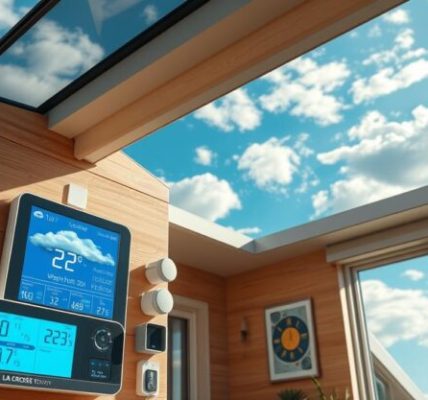Introduction:
What is Automotive Technology?
Car innovation alludes to the reconciliation of cutting edge frameworks, apparatuses, automotive technology and strategies that work on the usefulness, wellbeing, and proficiency of vehicles. Throughout the long term, the auto business has gone through an upheaval with developments that have changed how vehicles work. From self-driving vehicles to electric motors, auto innovation is molding the fate of transportation.
The Evolution of Automotive Technology
The excursion of car innovation started quite a while back with the creation of the ignition motor. From that point forward, the business has made huge progressions:
The Early Era:
Essential mechanical frameworks ruled the auto world, with vehicles principally filling in forms of transport.
Mid-20th Century:
Advancements like programmed transmissions, cooling, and power guiding became standard elements.
Modern Advancements:
The presentation of PC frameworks, sensors, and availability has carried vehicles into the advanced age.
Today, the attention is on making more intelligent, more secure, and more productive vehicles utilizing state of the art innovation.
Key Trends in Automotive Technology
The auto business is developing quickly, determined by arising patterns and buyer requests. Here are a few key turns of events:
Autonomous Vehicles (Self-Driving Cars)
Self-driving vehicles are quite possibly the most thrilling progression in auto innovation. Utilizing artificial intelligence, sensors, and cameras, these vehicles can explore streets with insignificant human intercession. Organizations like Tesla, Waymo, and Passage are driving the charge in creating independent driving frameworks.
Benefits:
Diminished human blunder, prompting less mishaps.
Upgraded portability for people with handicaps or restricted admittance to transportation.
Proficient traffic the board through smart frameworks.
Electric Vehicles (EVs)
The shift towards electric vehicles denotes a huge push toward manageability. Car innovation has empowered the improvement of strong batteries, productive charging stations, and imaginative plans that settle on EVs, a viable decision for some.
Benefits:
Zero emanations, diminishing the carbon impression.
Lower working expenses contrasted with conventional fuel-controlled vehicles.
Government motivators and sponsorships for EV reception.
Connected Cars
Associated vehicles use a web network to give continuous updates, route, and correspondence between vehicles. This car innovation improves the driving experience and guarantees wellbeing.
Key Elements:
GPS and continuous traffic refreshes.
Vehicle-to-Vehicle (V2V) correspondence.
Distant diagnostics and programming refreshes.
Advanced Driver Assistance Systems (ADAS)
ADAS incorporates highlights like versatile journey control, path flight admonitions, and programmed crisis slowing down. These frameworks influence cameras and sensors to improve driver security.
Influence:
Further developed mishap counteraction.
Upgraded driving solace and accommodation.
Expanded shopper trust in vehicle wellbeing.
Artificial Intelligence and Machine Learning
Man-made intelligence and AI are changing car innovation by empowering more intelligent and more prescient frameworks. These advancements are utilized for independent driving, prescient upkeep, and customized client encounters.
Applications:
Perceiving driver ways of behaving.
Giving voice-actuated controls.
Upgrading route precision.
The Benefits of Automotive Technology
Auto innovation carries various advantages to buyers, makers, and the climate:
Safety:
High level wellbeing highlights and independent frameworks diminish the probability of mishaps.
Efficiency:
Electric and cross breed motors lower fuel utilization and lessen emanations.
Convenience:
Brilliant highlights like keyless section, remote beginning, and infotainment frameworks make driving more charming.
Sustainability:
Innovations like EVs and hydrogen energy components add to a greener planet.
Cost Savings:
Prescient support frameworks and effective motors lessen long haul costs for vehicle proprietors.
Challenges in Automotive Technology
Notwithstanding its advantages, the progression of car innovation faces a few difficulties:
High Development Costs
Creating progressed frameworks like artificial intelligence driven programming and electric batteries requires critical speculation, which can drive up vehicle costs.
Infrastructure Limitations
The far reaching reception of EVs and independent vehicles relies upon a vigorous framework, for example, charging stations and the 5G network.
Data Privacy and Security
Associated vehicles produce huge measures of information, raising worries about online protection and client security.
Consumer Acceptance
A few drivers still have some lingering doubts about completely independent vehicles and incline toward conventional frameworks.
The Future of Automotive Technology
The eventual fate of car innovation is brilliant, with advancements that guarantee to reclassify transportation. We can anticipate this:
Enhanced Battery Technologies:
Longer-enduring batteries with more limited charging times will make EVs more pragmatic for regular use.
Wider Adoption of Autonomous Vehicles:
Self-driving vehicles will turn out to be more normal as innovation improves and guidelines adjust.
Sustainable Materials:
Vehicles will be developed with eco-accommodating materials, diminishing their natural effect.
Hyper-Connectivity:
Vehicles will flawlessly incorporate brilliant urban communities, giving ongoing updates and enhancing traffic streams.
Conclusion
Car innovation is changing the manner in which we drive and associate with vehicles. As headways proceed, the opportunities for more secure, more productive, and reasonable transportation appear to be perpetual. Embracing these developments will shape a more astute and more associated future for all.
(FAQs)
What is automotive technology?
Auto innovation envelops progressed frameworks and developments that improve vehicle execution, security, and proficiency. It incorporates electric vehicles, independent driving, and network highlights.
How does automotive technology improve safety?
Advances like ADAS, programmed crisis slowing down, and path keeping help diminish the probability of mishaps by helping drivers and alleviating human mistakes.
What are the environmental benefits of electric vehicles?
Electric vehicles produce zero outflows, altogether lessening air contamination and reliance on petroleum derivatives. They add to a cleaner and more maintainable climate.
Will autonomous vehicles replace human drivers?
While independent vehicles are turning out to be further developed, broad reception relies upon mechanical progressions, administrative changes, and public acknowledgment. They are supposed to supplement, as opposed to totally supplant, human-driven vehicles soon.
What challenges does automotive technology face?
Challenges incorporate high advancement costs, framework impediments, information security concerns, and purchaser wariness about new innovations.
How can I stay updated on automotive technology?
You can follow industry news, buy into car magazines, or go to innovation exhibitions to find out about the most recent patterns and advancements.





